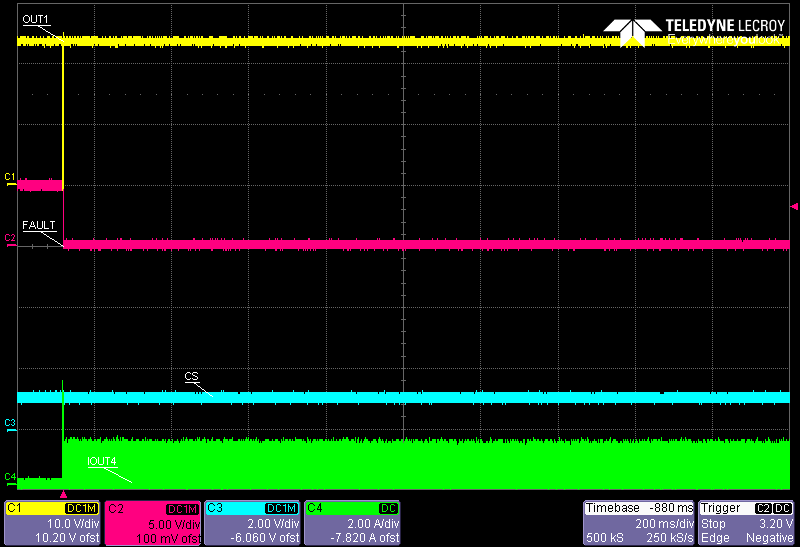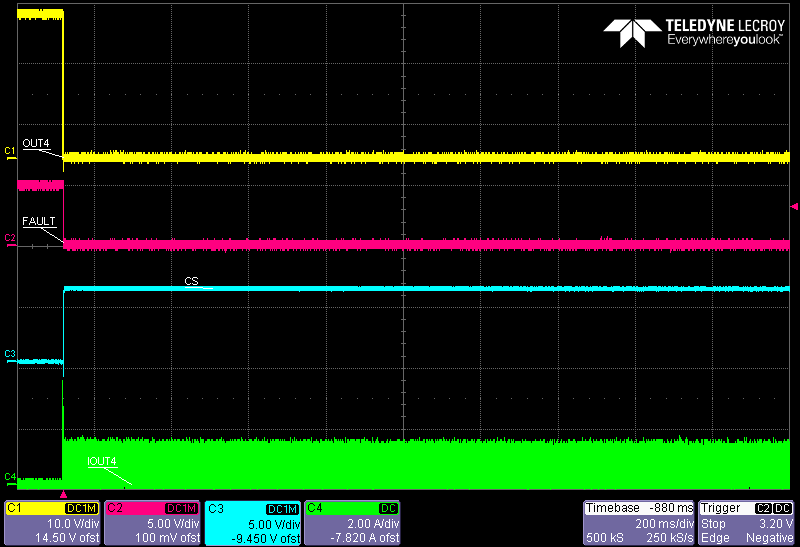Other Parts Discussed in Thread: TPS4H000EVM
Hello,
for a new design I'm evaluating the TPS4H000-Q1 version B chip.
Section 8.3.6.1 Short-to-GND and Overload Detection on page 20 of the datasheet (SLVSD73B-DECEMBER 2015-REVISED MARCH 2018) mentions that "When a channel is on, a short to GND or overload condition causes overcurrent. If the overcurrent triggers either the internal or external current-limit threshold, the fault condition is reported out. [...] The device automatically recovers when the fault condition is removed."
For testing purpose, I use the device with the following setup:
- the supply voltage pin VS is set to 24 V
- the DIAG-EN pin is pulled to 5 V to enable the diagnostic function
- the THER pin is pulled to GND to have the termal shutdown operating in the auto-retry mode
- the input control pins IN1, IN2, IN3, IN4 are pulled up to 5 V for channels activation
- the output pins OUT1, OUT2, OUT3 are connected to a resistive load
- the output pin OUT4 is not connected to any load
With this setup the device works as expected. Using the SEL and SEH pins to multiplex the current-sense function, the CS pins provides the value of the current load for each channel.
Then I simulate a short to ground condition by connecting very quickly the output pin OUT4 to GND. As a result:
- a global fault is reported by pulling down the nFAULT (active low) pin to GND
- the output current of channel 1, 2 and 3 is clamped at the current limit value set using an external resistor
- the CS pin reports a fault on each channel pulling up the voltage to the Vcs(h) value
Since the short to ground condition occurs very quickly and is removed almost immediately, I would expect the device to automatically recover, because the fault condition is removed.
Unfortunately this does not happen and the nFAULT pin latches pulled down to GND.
The only way to recover the device and have the global nFAULT signal cleared (i.e. nFAULT pin pulled up to 5 V) is to toggle the supply voltage.
Could you please clarify this point, which seems to contradict what the datasheet mentions about the automatically recovering?
Thank you.
Best regards,
Paolo



